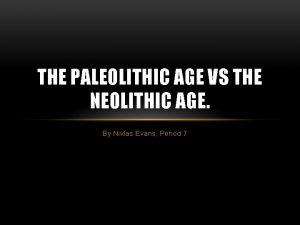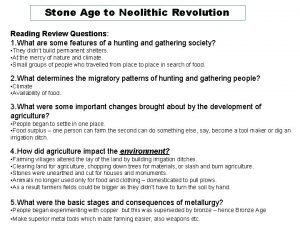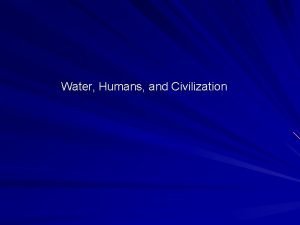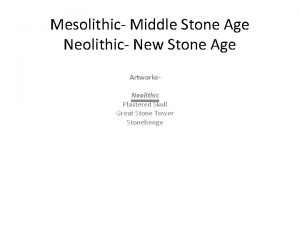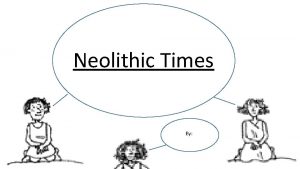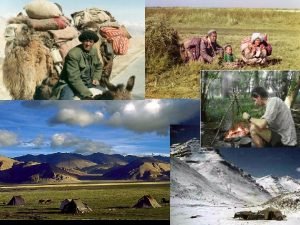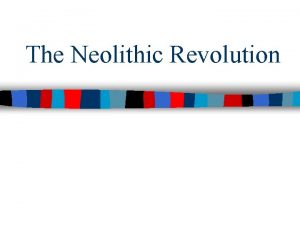The Neolithic Revolution New Stone Age Characteristics of






- Slides: 6

The Neolithic Revolution “New Stone Age” Characteristics of the Neolithic Period: • Sculpture became bigger • Pottery became more widespread and was used to store food harvested from farms • Architecture, and its interior and exterior decoration, first appears. • Hundreds of people performed very hard work for extended periods of time • First good evidence for religious practice (e. g. , plaster skulls) Skulls with plaster and shell from the Pre-Pottery Neolithic B, 6, 000 -7, 000 B. C. E. , found at the Yiftah'el archeological site in the Lower Galilee, Israel

Jericho • One of the oldest continuously lived-in cities in the world • Biblical reference: "the walls of the city fell when Joshua and his men marched around them blowing horns" Joshua 6: 1 -27 • 12, 000 years of human activity • Plastered human skulls Plastered human skull with shell eyes from Jericho, Pre. Pottery Neolithic B, c. 7200 B. C. E. (The British Museum)

Çatalhöyük • Pronounced "cha-tal hay OOK“ • South central Turkey • Nomad Settler • Art, both painting and sculpture, appears to play a newly important role • Art is everywhere among the remains of Çatalhöyük, geometric designs as well as representations of animals and people. • Many figurines have been found at the site Seated Woman of Çatalhöyük (head is a restoration), The Museum of Anatolian Civilizations, Ankara, Turkey

Çatalhöyük • Nearly every house excavated at Çatalhöyük was found to contain decorations on its walls and platforms • Both geometric and figural images were popular • Wall reliefs are also found at Çatalhöyük with some frequency, most often representing animals • Installations of animal remains (e. g. , bull bucrania) Neolithic Wall Painting in Building 80, Çatalhöyük Bull bucrania, corner installation in Building 77, Çatalhöyük

Bushel with Ibex Motifs • https: //www. khanacad emy. org/humanities/pr ehistoric-art/neolithicart/v/susa-ibex

Stonehenge • Salisbury plain in England • One of the most recognizable monuments of the Neolithic world and one of the most popular, with over one million visitors a year • The people living in the fourth millennium BC who began work on Stonehenge were contemporary with the first dynasties of Ancient Egypt, and their efforts predate the building of the Pyramids. • At least three phases of construction • A solar and lunar calendar? • https: //www. khanacademy. org/huma nities/ap-art-history/global-prehistoryap/paleolithic-mesolithicneolithic/v/stonehenge-unesconhk • https: //www. khanacademy. org/huma nities/ap-art-history/global-prehistoryap/paleolithic-mesolithicneolithic/a/stonehenge Interior of the sarsen circle and bluestones in the foreground, Stonehenge, Salisbury Plain, Wiltshire, England, c. 2550 -1600 B. C. E. , circle 97 feet in diameter, trilithons: 24 feet high




